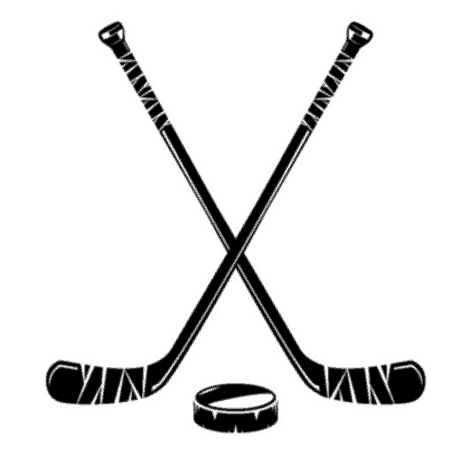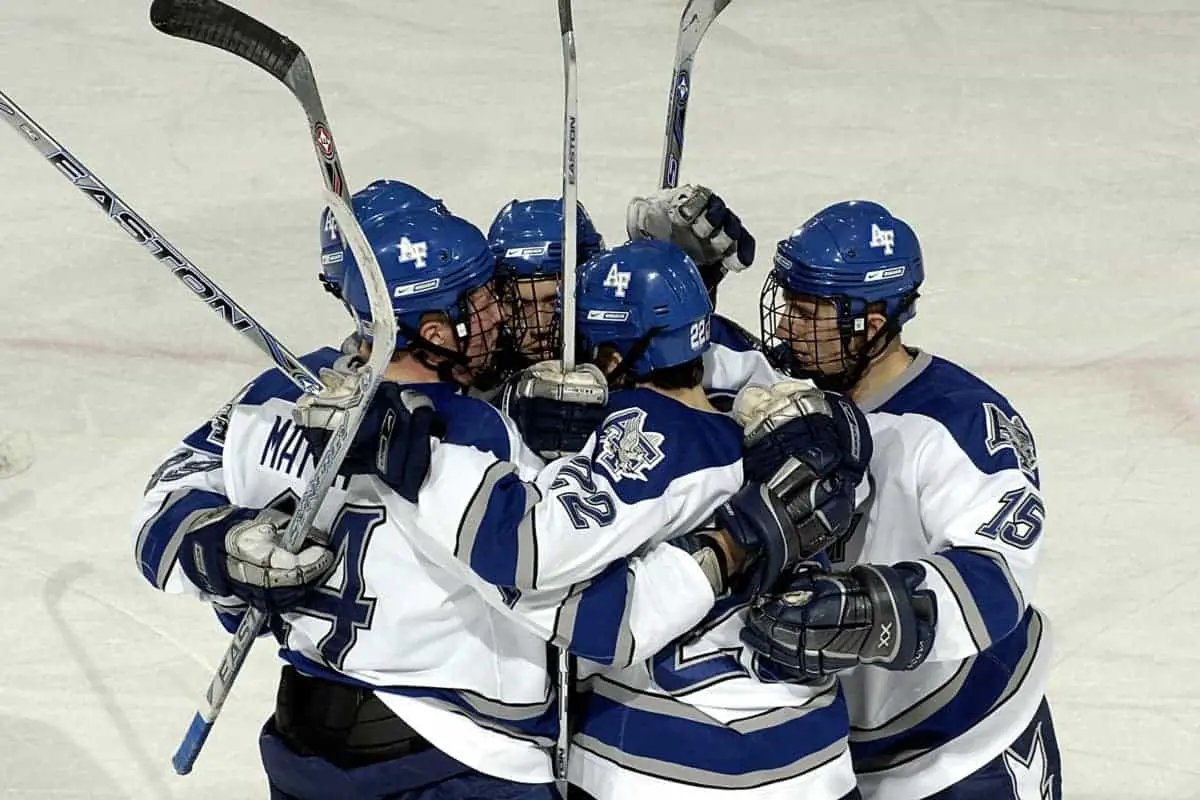Most fans are familiar with how substitutions work during the game, but unlike most sports, hockey players do not substitute during a break in the action in most scenarios. So what is a hockey line anyway?
A hockey line is a group of five teammates that play together on the ice at the same time. This line or group is comprised of 3 forwards and 2 defensemen, strategically chosen by the coaching staff to play together. Most teams have four lines on the roster along with two goalies. Substitutions, or line changes as they are called in hockey, usually happen during live action, while the puck is in play.
The coach’s role is to construct lines that give their team the best chance to win. During the game, the coach is in charge of substituting the lines. But how does he decide when to make that call?
How do Hockey Players Know to Change Lines?
Players know when to change lines during the game when their coach communicates to them seconds before jumping over the wall and onto the ice. Keep in mind, changing lines or mixing up the combination of teammates on the same line, usually does not happen until later in the game. If certain teammates are not playing well or the coaching staff does not like the results they are getting, the coaches will change what defensemen are playing with what forwards (changing who plays on what line).
The coaches will instruct what players are up next, usually identified by a number or one player that is the leader of that line. Each player waiting to jump on the ice will say the name of the player they are switching with on the next shift change. This is necessary because if 2 players jump on the ice for 1 player coming out of the game, the result will be a penalty.
How Many Line Changes in a Hockey Game?
The average number of line changes during a hockey game is 26. Now, that number has a few factors that play into it. The best players on the ice are going to play more minutes than the less skilled ones. Ideal shifts last between 30-45 seconds ideally. For certain circumstances, shifts last longer. If a player skates normal shifts and plays 15 minutes a game, they will substitute about 26 times.
If you are the most valuable player on the ice, your minutes could creep into the low 20’s. Rarely, but it does happen, players could play mid-20-minute games. This is referring to total ice time. Other factors, like injuries, schedule, time of the game, etc play into ice time. This is why the coaches get paid the big bucks (in the NHL anyways).
Hockey Line Names
In the NHL and other leagues, there are 3 ways to refer to line names. Hockey line names are given out by their nickname, the center’s last name, or ranking. On the bench, the coach designated for calling substitutions will yell out the center’s name. Everyone knows who the best players are, so the rankings are usually used outside the locker room.
Outside the players, the lines are usually referred to as “lines 1, 2, 3, or 4.” The top line or line 1, is the best 5 player combination the hockey team can put on the ice. This includes the best player and the best surrounding 4 players can put around him. Usually, the second-best player is on line 2, but it comes down to strategy from the head coach.
Nicknames are fun. The hockey world has plenty of slang terms and language known only to the stick and puck bubble. Nicknames are given to lines all the time. Some of the more famous nicknames include ‘The Frenchmen,” “The Mafia Line,” and “The Pony Line.” You can search for hours to find classic names that represent the lines very well.
4th Line in Hockey
The 4th line in hockey is the bottom of the barrel. No way around it. Before we get to down on the last line, we need to remember how important every player is. Hockey is unique in that every player on that bench is going to get playing time. Soccer, baseball, and basketball are all sports where rarely do you see everyone that has a jersey on playing that night. If so, high change there is a blowout.
With every player hitting the ice, the worst players on the team still have to show up. It is similar to the bench in the NBA. If you have a good 6th man or a deep bench, you give your team a shot at winning it all. If your fourth is good, you give your best players a chance to rest. The home team has a distinct advantage with getting the last substitution during a break in the action.
Most fourth lines are known as checking lines. Thinking through keeping the best line of the other team at bay, many coaches and general managers establish the fourth line. This line is rougher, more physical, and known for its defense. You need to have guys on the team that know how to play a physically dominating game, so the other team’s best line does not think they can just tiptoe through the game flashing their skills. They need to know if they get too cute, they will get punished.
Hockey Line Types
So what are the other lines for? The top line needs to score. That is their job, and if they do not accomplish the goal, the machine will not work. The last line we discussed earlier. Crunch the opposing team and let their best players know keeping their head up is a must. What do lines 2 and 3 get to do?
The second line is composed of players that could be on the first line, but are needed to add value in the second-team offense. If you can comprise two waves, one after the other, of tough offense, you give yourself a good chance to put goals in the back of the net. Coaches are constantly tweaking lines, so often you can see players going back and forth between lines one and two.
The third line is a combination of the second and fourth. The ask is to add offense. If you can get goals from your third line constantly, you have a great shot at winning. You must keep the puck out of your net playing on the third line. This line will see some offense from the other side. Do not be surprised if you see their best players shift after shift.
The last unit of players is called the special team unit. When you commit a penalty or go on the power play, a group of 4 or 5 players will skate out and play during those times. Your penalty kill unit must be players that are willing to block shots and be physical with other players. Smart, defensive, quick players get a shot to prove themselves during this time. Penalty killers do not get the glory outside the team, but the players inside the locker room know the sacrifice and gut it takes to play on that line.
Your power-play unit is important as well. This 5 on 4 opportunity only comes around a few times a game, so you must capitalize. This unit has the most skilled players and those likely to burn it past the goalie. Teams spend hours during the week practicing the power play, both on the offensive and defensive side. At the end of the day, it’s simple. Put the puck in the back of the net if you have a player advantage.
During a power play, there are usually 2 units ready to go. Your top unit power play should be scoring the most goals and get the majority of the penalty minutes. If they are not performing, the coach may send the second line out first to send a message to everyone. For killing penalties, it is the next man up mentality.

